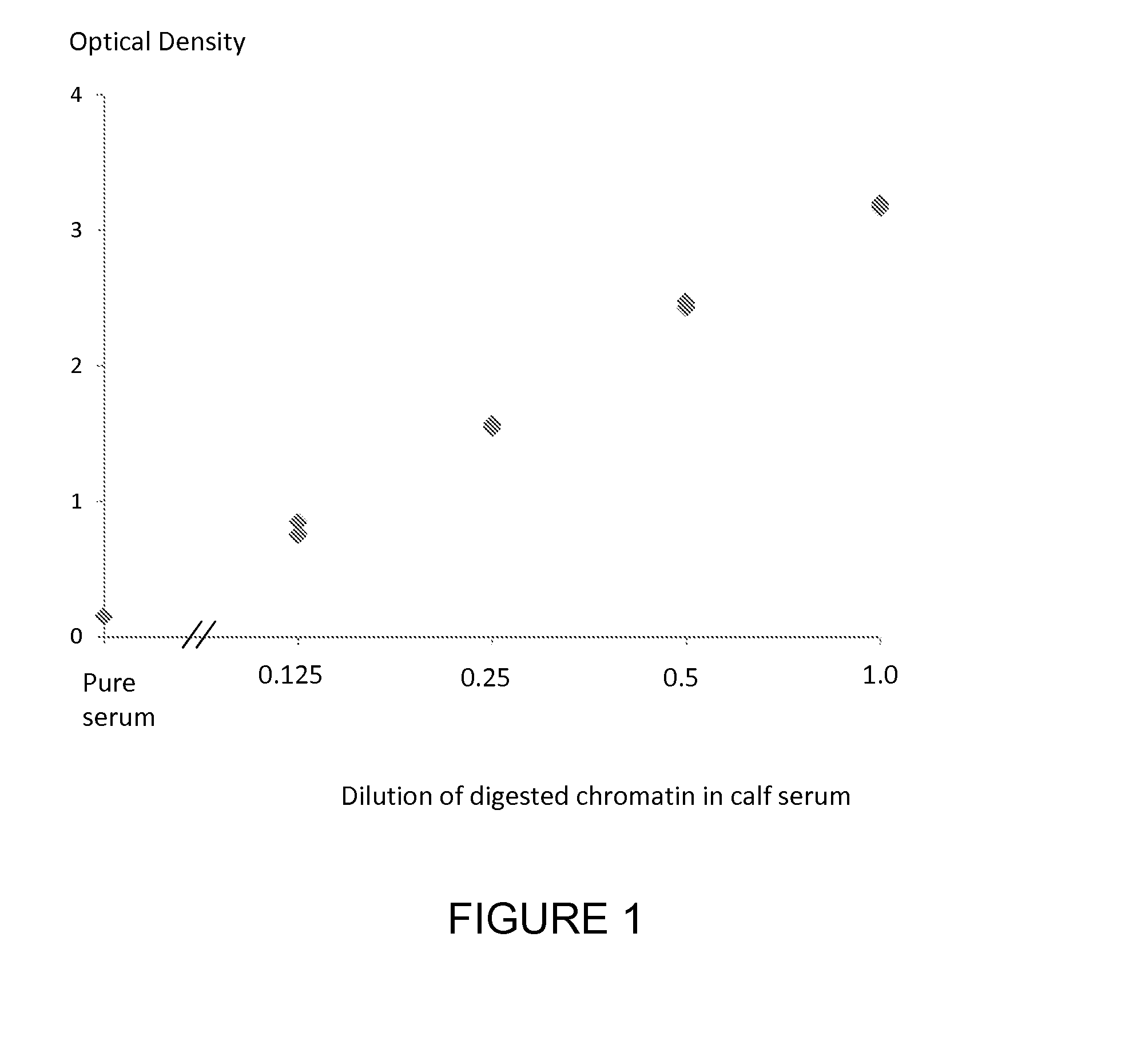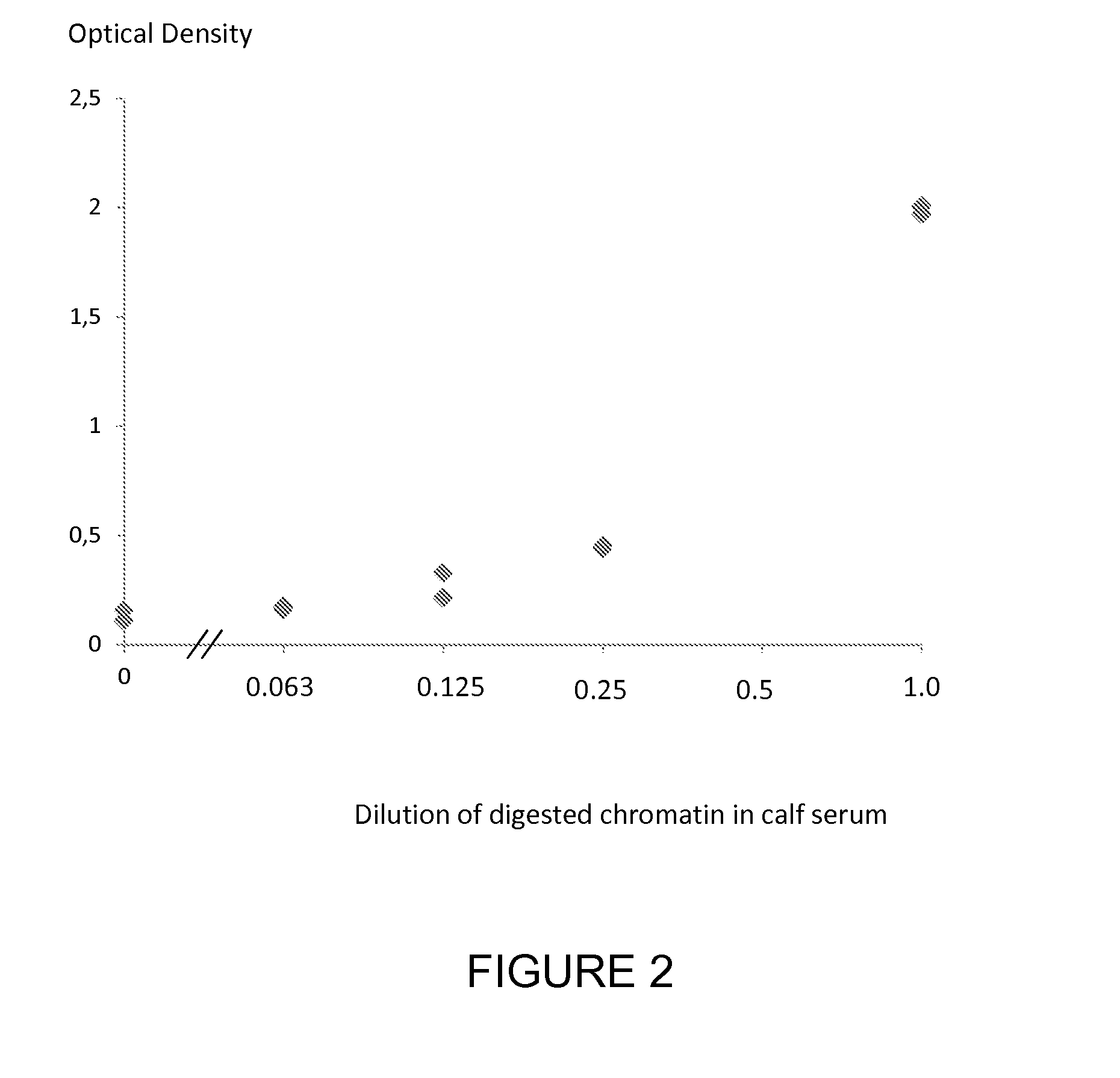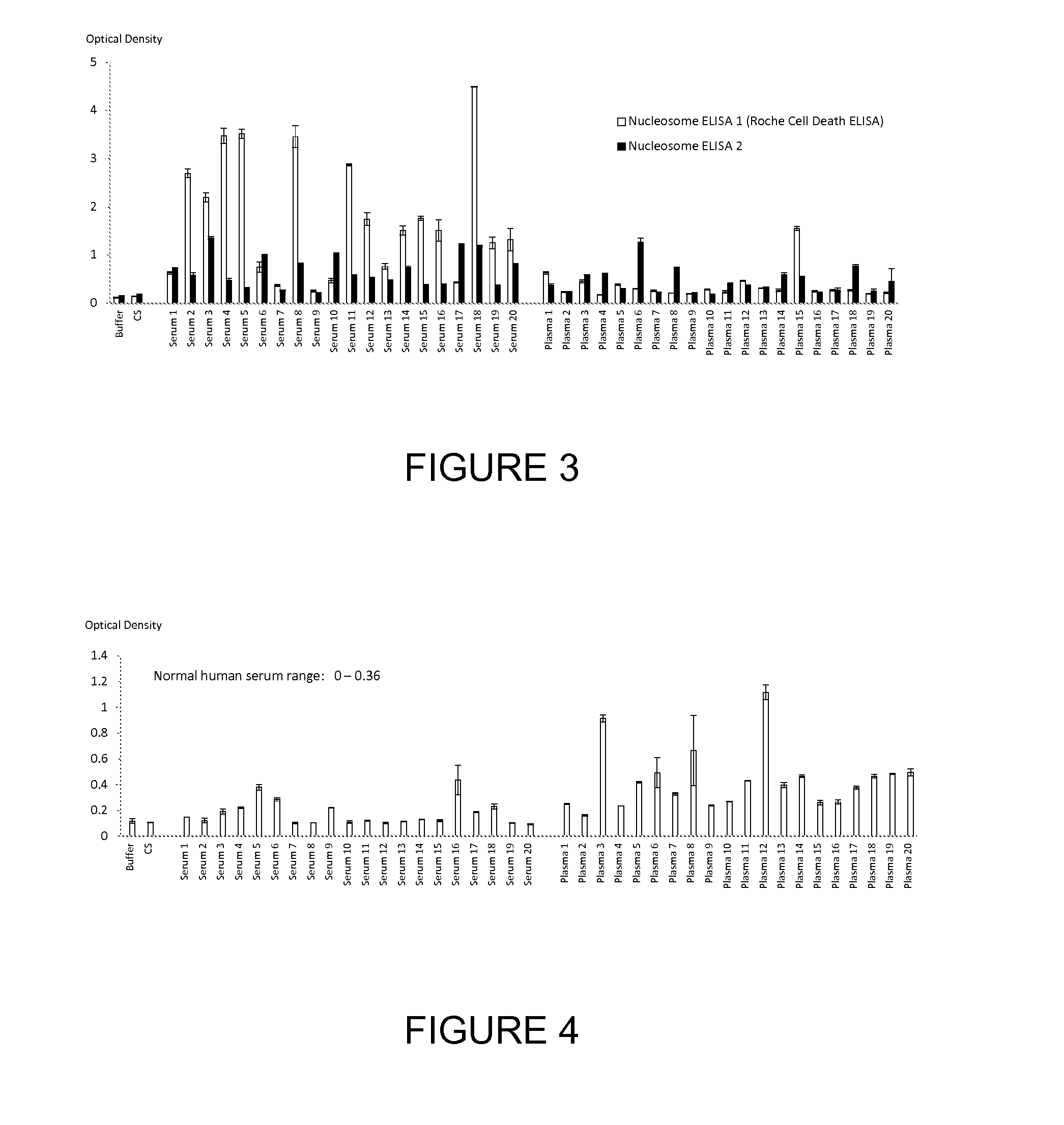Method for detecting nucleosomes containing nucleotides
a nucleosome and nucleosome technology, applied in the field of nucleosome containing nucleotides, can solve the problems of inability to accurately detect nucleosomes in complex biological media, and inability to accurately detect nucleosomes
- Summary
- Abstract
- Description
- Claims
- Application Information
AI Technical Summary
Benefits of technology
Problems solved by technology
Method used
Image
Examples
example 1
[0212]A commercially available nucleosome preparation produced by digestion of chromatin extracted from MCF7 cells in which the DNA and proteins in the nucleosome are cross-linked for stability (ensuring that all histones present in the preparation are incorporated into intact nucleosomes) was assayed for methylated DNA using an ELISA method for the nucleosome associated nucleotide 5-methylcytosine using a solid phase anti-histone capture antibody that binds intact nucleosomes and a biotinylated monoclonal anti-5-methylcytosine detection antibody. The nucleosome sample was serially diluted in fetal calf serum and was tested in duplicate in the ELISA. Neat fetal calf serum was also run in the ELISA as a control sample containing no cell free nucleosomes. The assay method was as follows: A solution of anti-histone antibody in 0.1 M phosphate buffer pH 7.4 was added to microtitre wells (100 μL / well) and incubated overnight at 4° C. to coat the wells with capture antibody. Excess anti-h...
example 2
[0213]A commercially available nucleosome preparation produced by digestion of chromatin extracted from A375 cells in which the DNA and proteins in the nucleosome are cross-linked for stability (ensuring that all histones present in the preparation are incorporated into intact nucleosomes) was assayed for 5-hydroxymethylated DNA using an ELISA method for the nucleosome associated nucleotide 5-hydroxymethylcytosine using a solid phase anti-histone capture antibody that binds intact nucleosomes and a biotinylated monoclonal anti-5-hydroxymethylcytosine detection antibody. The nucleosome sample was serially diluted in fetal calf serum and was tested in duplicate in the ELISA. Neat fetal calf serum was also run in the ELISA as a control sample containing no cell free nucleosomes. The assay method was as follows: A solution of anti-histone antibody in 0.1M phosphate buffer pH 7.4 was added to microtitre wells (100 μL / well) and incubated overnight at 4° C. to coat the wells with capture a...
example 3
[0214]We used two nucleosome ELISA methods of the current art to measure the circulating cell free nucleosome content of serum and plasma blood samples taken from 20 healthy subjects. The first current ELISA method (ELISA 1) was the Roche Cell Death ELISA and the other (ELISA 2) an ELISA employing an anti-histone capture antibody and an anti-histone-DNA complex detection antibody. The nucleosome levels detected by both current nucleosome ELISA methods were lower in normal plasma than in normal serum. The normal range (expressed in optical density units) for the serum level of nucleosomes was calculated (mean±2 standard deviations of the mean of the 20 healthy subject serum results) to be 0-4.3 OD units for ELISA 1 and 0-1.4 for ELISA 2. The respective ranges for plasma were 0-0.95 and 0-0.96. The results are shown in FIG. 3.
[0215]We also measured the levels of nucleosomes containing the two nucleosome associated nucleotides as well as 3 nucleosome associated histone variants and a h...
PUM
| Property | Measurement | Unit |
|---|---|---|
| OD | aaaaa | aaaaa |
| pH | aaaaa | aaaaa |
| pH | aaaaa | aaaaa |
Abstract
Description
Claims
Application Information
 Login to View More
Login to View More - R&D
- Intellectual Property
- Life Sciences
- Materials
- Tech Scout
- Unparalleled Data Quality
- Higher Quality Content
- 60% Fewer Hallucinations
Browse by: Latest US Patents, China's latest patents, Technical Efficacy Thesaurus, Application Domain, Technology Topic, Popular Technical Reports.
© 2025 PatSnap. All rights reserved.Legal|Privacy policy|Modern Slavery Act Transparency Statement|Sitemap|About US| Contact US: help@patsnap.com



